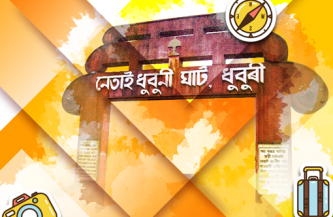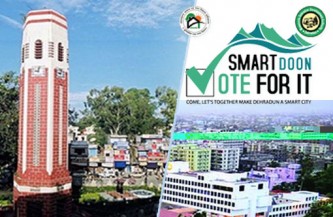Citizens Consultation for the Smart Cities Mission

On 25 June 2015, Prime Minister Shri Narendra Modi launched the Smart Cities Mission to enable the holistic development of Indian cities. This bold new initiative under the Ministry of Urban Development (MoUD) aims to drive economic growth and improve the quality of life of people by enabling local development and harnessing technology as a means to create smart outcomes for citizens. According to MoUD, the core elements of a Smart City include: adequate water and electricity supply, suitable sanitation and solid waste management, efficient public transportation, affordable housing, robust IT connectivity and digitalization, e-governance with citizen participation, sustainable environment, and safety and security of citizens with health and education for all. These objectives are proposed to be attained through a judicious mix of retrofitting, redevelopment and greenfield development.
Citizen consultation is an important pillar of the first phase of the Smart Cities Mission. The Ministry encouraged local governments to engage citizens as they worked on their city’s Smart City Proposal, and recommended MyGov as the core platform for citizen consultation. Municipal governments supplemented their online MyGov activities with meetings, discussions, and other public interactions in their respective cities.
MyGov facilitated citizen consultation for the Smart Cities Mission in two stages. During the first round, it offered cities a range of citizen consultation methodologies, such as discussion forums, tasks, online polls, public talks, and blogs. These tools served as a catalyst for citizens to participate in the Smart Cities Mission and the competition, also known as the India Smart Cities Challenge, and offer suggestions for the development of their city.


During the second round of the Smart Cities Mission, municipal authorities from the shortlisted cities used MyGov to collect suggestions from citizens on their vision for a Smart City to incorporate these into draft proposals. Of the 98 cities, 57 put the draft proposals online for further comments and inputs from the public. Overall, the proposals received a total of 1,42,895 comments.
The 98 cities adopted a range of measures to encourage citizen engagement. Municipalities reached out to young citizens by visiting schools and colleges to educate them about the Mission. Municipal corporations used popular social networking platforms like Facebook and Twitter to spread awareness about the mission. Still others created dedicated websites with detailed updates on progress. SMS campaigns, voice message campaigns, and airtime on radio channels helped expand a municipality’s reach. Many cities even created free Wi-Fi hotspots in crowded areas so that people could access Internet and submit suggestions. Advertisements in newspapers, pamphlets, hoardings, and the MyGov app played a significant role in making the Smart City Mission a nationwide phenomenon.
The Smart Cities Mission – MyGov collaboration is an unprecedented exercise in urban planning, which has transformed planning from a top-down centralized activity into a democratic consultative process, taking the citizens’ perspective as the foundation stone on which the city plan is built. MyGov looks forward to partnering with more cities and citizens in the subsequent rounds of the Smart Cities Mission play its part in developing Smart Cities across India.
– Gaurav Dwivedi,
CEO, MyGov
Total Comments - 158
Leave a Reply
You must be logged in to post a comment.





 Login
Login
very clever prime minister he could easily propagate his campaigning creating awareness among public, sharp brain,,Municipal corporations used popular social networking platforms like Facebook and Twitter to spread awareness about the mission. Still others created dedicated websites with detailed updates on progress. SMS campaigns, voice message campaigns, and airtime on radio channels helped expand a municipality’s reach. Many cities even created free Wi-Fi hotspots in crowded areas,
How Indian Technology companies can participate in the Smart City projects such that our Indian products are selected & utilized for the benefit of Indian cities? Please guide.
Government should provide opportunity to adopt road for maintenance for specific period. Government should provide rights to him/her to give his/her or his parents name to that road for specific period. in this duration particular person is responsible for maintains and cost required for maintaining that road. In this way Burdon on municipal corporation is automatically REDUCED.
Big companies are also interested in adopting roads and areas as csr activities
In Pune, only Roads and areas in front of persistent and Infosys are very cleaned and maintained so It will be very good if government should restrict every company to maintain cleanliness on road and area in front of companies. Most of companies maintained only their campus and they avoid public roads and area infront of their building
We Are Given Huge Votes 73 seat to Bjp in Up.
Why No Smart Cities will be selected from up?
पहली 20 स्मार्ट सिटी में यूपी के एक शहर का नाम आना साबित करता है पार्टियो के यूपी विकास के दावे कितने खोखले हैं|
1. Link all services with Aadhar.
2. Use geomapping for linking Govt services – police, roads, schools, hospitals, sanitation, electricity, tax etc. We need an APP to make it easy.
4. Master plan for next 50 years.
5. Proactive than reactive. Wider ring roads, inter city roads.
6. environment friendly fuel usage – CNG, Solar powered cars.
7. Clear demarcation of city and forest lands.
8. Tracking of every citizen for security purposes.
9. Remove human interface at govt offices.
Pollution in cities is often attributed to vehicle pollution. One of the hidden reason for high dust pollution is absence of cemented or brick laid kerb. Municipality makes the road and leaves gap between the road and building or wall or any other structure. Only if Kerb is properly made along with suitable rainwater drain then problem of pollution and rainwater drainage can be addressed. Excess water on roads in absence of drain cause damage to roads. This solution will address both aspects.
Decentralized solution for waste management
Zero Waste Management System: https://youtu.be/_yW5h5ChDYU
Under Swachh Bharat Abhiyan and Make In India we have taken initiative to develop machines for managing 4 different kinds of waste into useful products. Garden waste, food waste, plastic waste and paper waste. All different kinds of waste can be treated and converted into useful products like biofuel which can be used for smokeless Chulhas in villages from horticulture/agriculture waste, compost from organic/food waste, paper bricks & new paper from paper waste, plastic granules.
Though the Central Govt had taken this wonderful initiative but the planning, fund allocation, implementation, supervision etc are all under the control of the respective state governments. Take for example of Tamil Nadu every body was aware of corruption at the grass root level which leads to poor quality in construction. The Central Govt should ensure by thorough supervision for proper implementation of the program. Simply allocation of fund to the state govt will ultimately be looted .